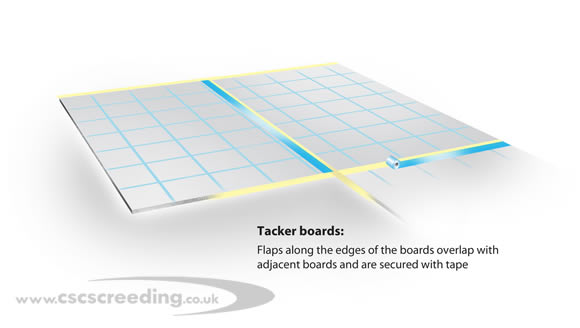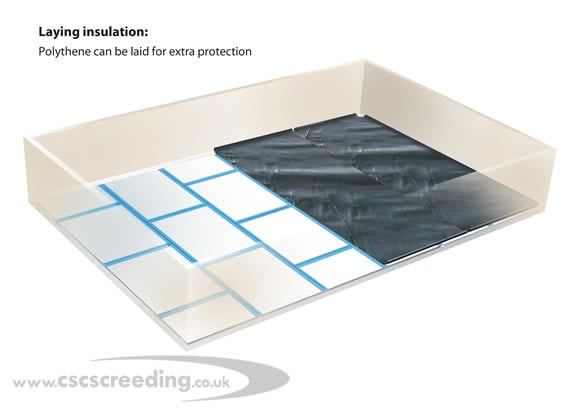
Things to remember while installing insulation before screeding
Right from rigid board type insulation to the more flexible and compressible foam type materials, a wide range of insulation materials are now in use as thermal and acoustic insulation underneath screeds. The insulation is generally laid as an intermediated layer between the floor base and the screed, and the construction is called a floating type of screed construction. There are a few important things to remember while installing the insulation before screeding.
Base preparation before installing the insulation
Rigid Board Insulation
Usually being rigid boards of extruded or expanded polystyrene, rigid board insulation panels need to be laid on a reasonably level floor base that provides continuous support to the insulation panels. Pre-cast floors are often prone to levelling problems such as sharp protrusions or steps between precast units and should ideally be levelled adequately with a levelling compound to prevent sound bridging and other problems with the insulation. For domestic applications, it is best to apply a thin layer of sharp sand and taper out the stepped areas.
Flexible Insulation
Flexible insulation such as expanded polyether foam or mineral wool quilt do not normally require as high a level of accuracy as the rigid insulations, as such materials align better to the structure of the base on the application of weight from the layers above. All the same, it is important to level out any abrupt steps or significantly uneven areas on the base because it could give rise to tensile stresses on the application of weight, which in turn can adversely affect the quality of sound insulation. For minor irregularities of the surface, it is best to carry out localised levelling to prevent point contact. However, if the base is significantly uneven, it would be worthwhile to consider using a modified screed which can be laid at a lower thickness.
Installation of insulation

For floating screeds, it is important to lay a layer of DPM (Damp Proof Membrane) over the base substrate, to prevent the seepage of moisture or liquids between the layers. Before installing the insulation layer, DPM sheets should be applied on the prepared base, covering all abutments. Special care should be taken to tape the sheets at the joints, to avoid displacement.
The insulation can then be installed, starting with the external walls. Begin by applying perimeter strips of approximately 25cm thickness, along the external walls. The strips should be applied at full depth to prevent cold bridging. Go on to lay the insulation, once all the services that are present on the floor are cut and adequately routed.
Also ensure the insulation boards are installed in a staggered manner, to facilitate interlocking. The insulation boards can then be taped down with gaffer tape or foil tape.
Make sure all the service penetrations, abutments and columns are covered with a perimeter, and see to it that the internal corners are tight and taped down. The external corners should be tidy and taped neatly without any gaps.
In case of rigid insulations that do not come with a pre-laminated membrane, it is best to apply a separating layer of 500 gauge polythene over the insulation, for added protection.
